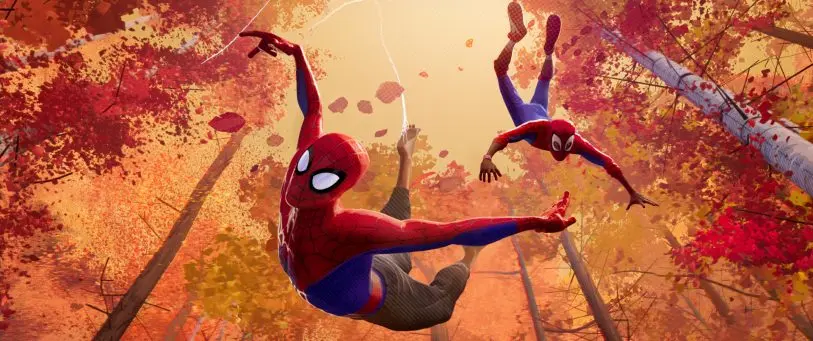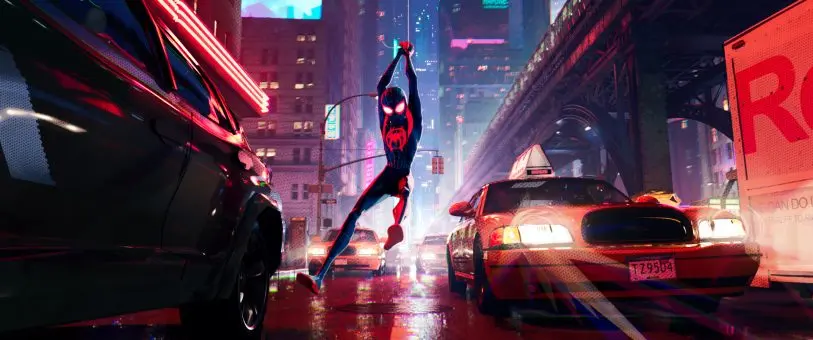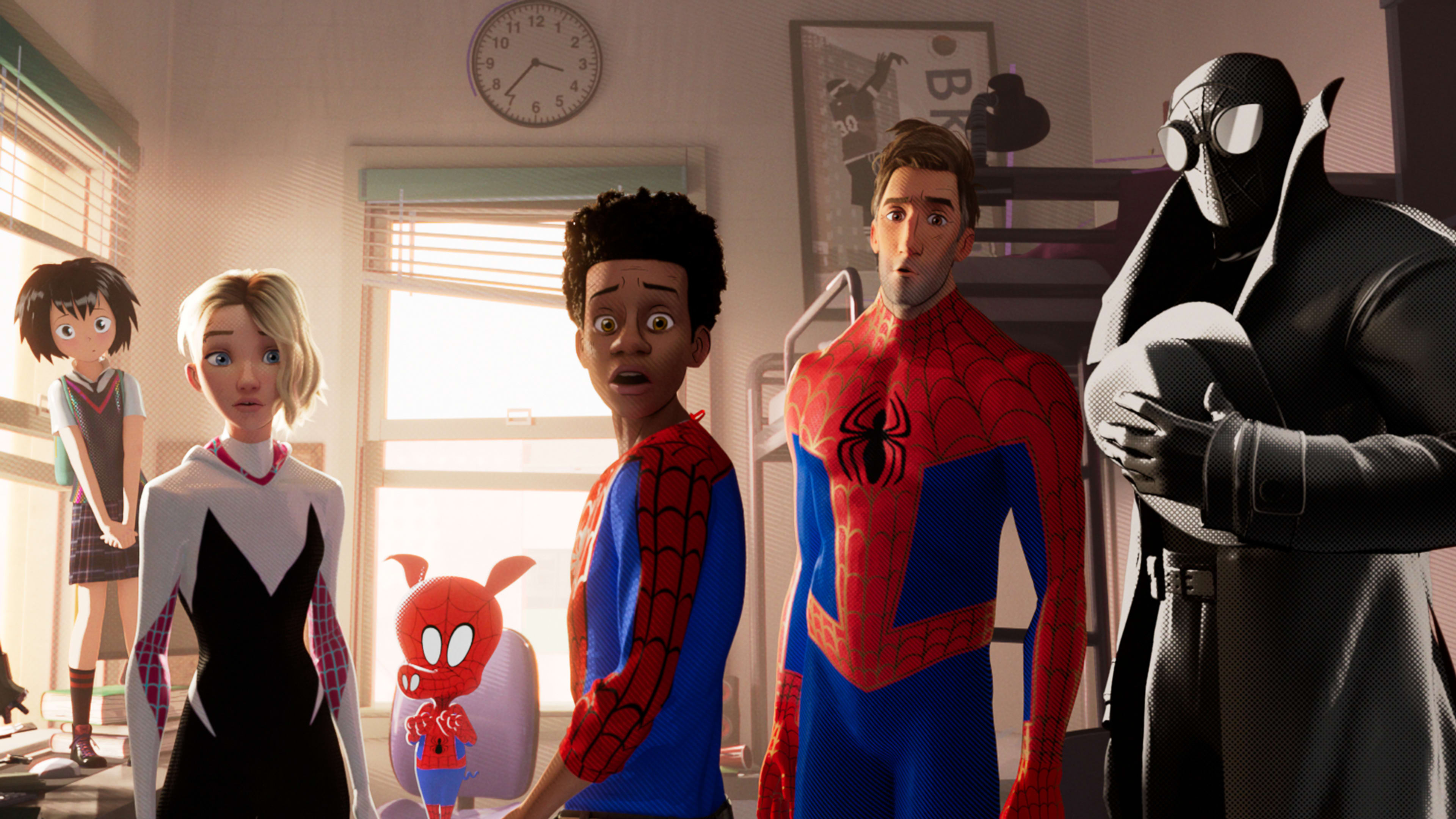Phil Lord was at a Jeff Koons exhibit in New York when inspiration struck: What would a post-modern Spider-Man look like? The franchise has seen a dizzying array of sequels and reboots since Tobey Maguire’s 2002 turn as the webslinger. So, with the superhero market as bloated as it is, the challenge for Lord and filmmaking partner Christopher Miller became this: How do we make an iconic, if somewhat stale, character feel fresh in a new movie?
The answer became animation done like nothing else. Today, that vision for Spider-Man: Into the Spider-Verse hits screens with another groundbreaker: the film debut of Miles Morales, an Afro-Puerto Rican teen who assumes the Spider-Man mantle after Peter Parker dies.
“Chris and Phil wanted to do something that they had never seen before—so pretty lofty goals from the beginning,” Danny Dimian, the visual effects supervisor on Spider-Verse, says of the coproducers who wrote and directed The Lego Movie. “Early on, we embraced the idea of, ‘it’s not broken, break it.’ That was something we joked about to try and free artists from feeling too uncomfortable to try something that there wasn’t an immediate way to do it.”
In Spider-Verse, Morales gains his powers (through a spider bite, of course) just as Spider-Man’s nemesis Kingpin is launching a machine that can tap into multiple universes. When the technology malfunctions, parallel universes start colliding, and with that, three other Spider-Men, a Spider-Woman, and a Spider-Pig wind up in Morales’s timeline. The casting of Morales has been a buzzy, not to mention diverse, addition to the franchise, giving it new energy.
Dimian, who describes himself as the head coach for the team of artists and engineers, breaks down the creative magnitude of Spider-Verse and why an animated addition to the predominately live-action franchise is important.

The final look of the film became a gorgeous blend of CG and hand-drawn animation with the aim of imitating the art of comic book illustrations. The animation team even went so far as to replicate color offsets, printing errors in comic books that can make a panel look like it’s slightly out of focus. Rethinking what an animated film could look like was no small order. In a regular animated film, it would take an artist about a week to animate four seconds of film. For Spider-Verse, it took each artist one week to animate one second.
“When you paint something, it’s just artwork–you can kind of do anything you want. But when you move it, then that’s where all of your issues and all your problems start,” Dimian says. “The more abstract you are, the more stylized you are, the more that you’re going to have to start solving things.”

“If you’re animating on twos, you have one frame where you are moving and then another frame where you’re not moving at all. And then you move again. From a simulation point of view, that’s the equivalent of stopping and starting, like 0 to 100 every time–simulations don’t like that,” Dimian says. “So, for simulation purposes, we had to have the pipeline rewritten so the animation team could animate the way they want. And then under the hood, the pipeline then tries to interpret the information that is meaningful for a simulation.”
In addition to technical problem-solving, going into a project with so much leeway soon became a necessary process of self-editing. The climactic battle between Kingpin and his cronies versus all six Spider-Men is a trip to say the least. Not only is the fight choreography intensely frenetic, the action is happening as Kingpin’s machine is melting all the parallel universes together, resulting in an explosion of colors and objects clashing together. Balancing all the above with several emotional moments peppered throughout the fight scene was a tight-rope act for Dimian and his team.
“Because there were so many things that we were trying, a lot of this movie was actually left pretty open and fluid,” Dimian says. “For example, the final battle actually went through even more color transitions and changes, but it started getting too confusing and kaleidoscopic. The danger is always that you’re doing something that is so visually interesting but doesn’t serve the story.”

“We just decided we are trying to come up with a new language. And any time someone is learning a new language–and in this case the audience is learning the language with us–there’s going to be a little bit of a learning curve on it,” he says. “But we decided to go big because the story is so strong that people will get into it, hopefully.”
Ultimately, Dimian hopes Spider-Verse will inject a fresh perspective on the Spider-Man franchise and to animation as a whole.
“We’re not beholden to any of the logical questions you might have if you’re doing a live-action version,” Dimian says. “So, if we got it right, we would have the best of a lot of things where we were free to be more crazy but still have the same impact and the same blockbuster feel.”
Recognize your brand’s excellence by applying to this year’s Brands That Matter Awards before the early-rate deadline, May 3.
